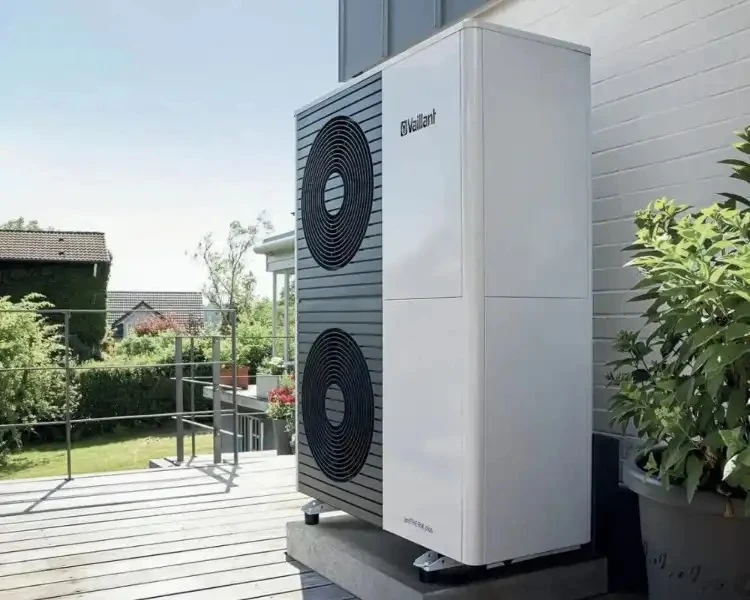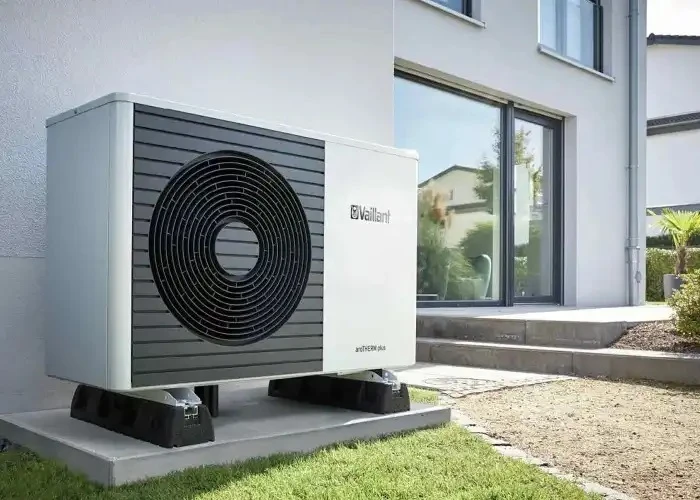What Installers Need To Know When Installing An Air Source Heat Pump
Heat Pumps
Published date: 3 September 2024 / Read time: 6 mins
Air Source Heat Pump Installation: A Guide for Installers
With so many of us looking to invest in alternative energy sources, the sale of heat pumps is surging. And as more homeowners look at swapping out their gas boilers in favour of air source heat pumps, such an opportunity will require more installers with the necessary expertise to install these energy-efficient sources.
Here at City Plumbing, our Renewables Team has created a simple guide to take you through the basics when installing air source heat pumps. Though it’s important to follow the manufacturer's instructions, our advice is ideal for those installers considering taking advantage of the demand by adding air source heat pump installation to their services.

Always Perform Pre-Installation Checks
Before any installation is carried out, a full inspection of the homeowner's property is crucial. Such essential checks here will ensure that any work needing to be carried out before the installation is highlighted can be completed before the heat pump is installed.
Arrange a suitable date for this inspection with the homeowner and let them know what you’ll be accessing during your visit.
- Is the air source heat pump the best model for the job? An installer will need to check and assess whether the air pump is the correct choice and is suitable for the property type.
- Will the air source heat pump provide enough energy to heat the home correctly? The size of the property along with the overall condition of the insulation will determine this.
- Would the property benefit from radiators or underfloor heating? Consider the most effective ways to distribute the heat around the home better.
- What is the likely size of the installation job? When installing an air source heat pump, the size of the task required will offer a rough estimate of the timing needed to complete the job.
When you’ve completed the necessary checks, you’ll be able to compose a report detailing your recommendations alongside potential savings the homeowner may be able to make using their new heat source.
And, once everything is agreed upon, you can then look to prepare the area for the installation of the air source heat pump.
Where to Place the Air Source Heat Pump
As the installer, you’ll be expected to use your knowledge when deciding on the placement of the air source heat pump in the property as well as where the equipment is to be installed. Key elements to consider here will be the available capacity, thermostats and heating controls, and how the heat is to be distributed.
The type of air source heat pump that you’re installing will be your first consideration. Typically these pumps are split-type systems, meaning you’ll have to account for locating the pump both indoors and outdoors.
Both the indoor and outdoor units of an air source heat pump will contain a fan and a coil. The purpose of the coil is to act as an evaporator when being used as a heat source or as a condenser when being used to cool the air.
The purpose of the fan in the outdoor unit is to move air around the coil with the indoor unit fan moving air across the coil and any ducts placed around the property.
Placing the indoor unit:
If a ducted system is decided on, permission will be needed to access this to connect the indoor unit. This system may be in the attic or basement. Any damage to the ducts may also need factoring in as repair time beforehand.
If there are no ducts in the property they will need to be installed before the installation process begins. However, the homeowner may opt for a ductless system, meaning a suitable unobstructed position will need to be found for the unit before securing it into place.
Placing the outdoor unit:
If the air source heat pump is small, it can be mounted on the side of the property. Yet, for those larger units, you may need to add a few concrete slabs in the ground outside the property before placing and arranging the air source heat pump in its final location.
Connecting Air Source Heat Pump Units
With both units in place, you’re now able to connect the air source heat pump. You’ll find detailed and specific instructions with each model that you work with. Those installation diagrams provided by the manufacturer are valuable resources here.
Yet, the basic typical steps involved here include:
How To Connect The Units:
- Connecting The Indoor Unit
You’ll need to start on the indoor unit before tackling the outdoor unit. Both of these units will need connecting via an access point which you can create in a ductless system by drilling a hole in the wall.
The lines can be run via:
The condensate drain: cleaning away any excess moisture, the heat pump cools and removes condensation that forms through the drain line.

The refrigerant line: Heat is absorbed and rejected by the refrigerant when moving through the heat pump system.
The electrical line: As a heat pump runs on electricity, an outlet is needed for the electrical wires.
When working on ducted systems, the access point can already be found in place in the basement or attic. Then, once this point is established, you can connect the refrigerant and condensate lines to the unit indoors.
- Connecting The Outdoor Unit
Now you’re able to focus on the outdoor unit. This will need to be connected to the indoor unit via the refrigerant line and electrical wires. By doing this the refrigerant can run through both the indoor and outdoor condensers.
Ensure the wires are insulated and protected against the elements. This is especially important if the unit you’re working with is a larger outdoor one and therefore more likely to come into contact with the elements during the colder months such as frost and snow.
Also, be sure to check the condensate drain is working correctly to prevent condensation from forming inside the property.
How To Finish Up The Installation
Before completing the installation of the air source heat pump, there are some final checks to carry out, including:
- Make sure any cables or pipes outside the property are secured to prevent any safety hazards.
- Ensure the sensors are running properly. Many heat pumps have sensors designed to adjust the temperature to run in line with the thermostat.
- If a smart heat pump has been installed, check that the access to the controls is running smoothly and that the homeowners understand and can operate the controls via their phone or tablet.
Trust City Plumbing For All Your Heat Pump Supplies
If you're looking for further help in choosing the best heat pumps or supplies, contact our Renewables Team at City Plumbing. Experts in the latest energy-efficient technologies, we're perfectly placed to help homes and businesses make the smooth transition to renewable technology.



